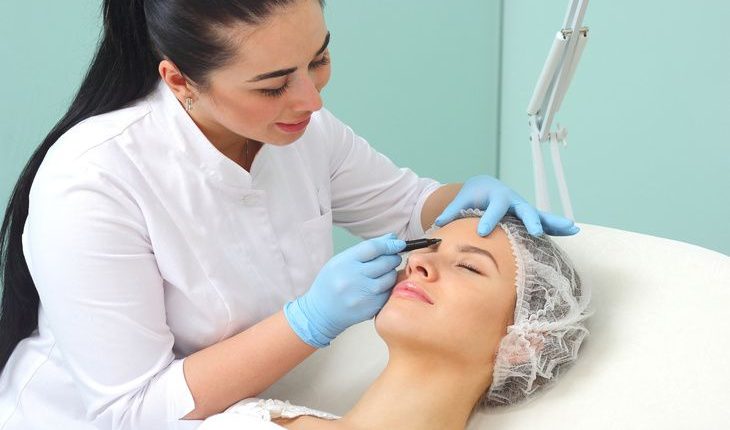Your Guide to the Different Types of Facial Injectables
If you're curious about facial injectables and want to get them done, you should learn about the various types available.
Table of Contents
There are more and more non-invasive surgery options becoming available for people who want to improve their looks without going under the knife. Facial injectables like fillers and Botox are on the rise and continue to climb each year. Injectables are a more affordable option for those who still want to achieve amazing results. Keep reading to learn which facial injectables are which, so you can pick the best option for you.
What Is Botox and What Are Facial Fillers?
Most people know Botox as a way to help correct wrinkles. It does this by blocking nerve signals in the muscles, causing the muscle to become paralyzed. When muscles are unable to move and make facial expressions, this will soften and help prevent wrinkles.
Facial fillers, on the other hand, are different. While the end result is to help make the face more youthful and reduce wrinkles, fillers achieve this another way. Fillers help fill line lines and wrinkles by adding volume.
Most people who already have wrinkles may find getting fillers are ideal over getting botox. Others may use a combination of the two. So long as you understand the mechanism of what both do, you can decide what is best for you.
Botox
Botox is a dermal relaxer, not a filler. However, it remains popular as a facial injectable because it does work in temporarily relaxing muscles. Those who worry about the signs of aging want to ward off the smile lines, crow’s feet, and forehead furrows before they come.
Dysport and Xeomin are also other brands clinicians may use as a dermal relaxer. Aside from warding off the wrinkles, people may also use Botox for migraines, problems with excessive sweating, eye twitching, and treating acne.
Botox is also effective for those who struggle with an overactive bladder, an enlarged prostate, or cervical dystonia (intense contractions of the neck and shoulder). Botox can accomplish these benefits because of nerve-blocking effects from the toxin, Clostridium botulinum.
Hyaluronic Acid
Hyaluronic acid is a dermal filler that includes brands like Juvederm, Captique, Prevelle, Elevess, and Restylane. Hyaluronic acid can reduce depressions due to wrinkles, scars, or injuries and help contour the skin.
You can see a dramatic change and improvement in fine and deep lines with hyaluronic acid. You can also use it to help redefine and shape the border of your lips and add volume.
Juvederm Ultra XC can accomplish this. Dermal fillers like hyaluronic acid can also fill in lines on the lips.
Calcium Hydroxylapatite
Calcium hydroxyapatite is a dermal filler that is naturally found in bones. It is effective for use in correcting medium to severe smile, frown, or marionette lines. You may also use it to address nasolabial folds or bring fullness back to the checks.
Clinicians will also suggest it for those who want to contour their face and add volume to certain areas where there is facial wasting. The most common brand available includes Radiesse.
Polyalkylimide
If you want a longer-lasting dermal filler, you should opt for a polyalkylimide filler like Aquamid. This is a filler most plastic surgeons prefer to use to help clients plump their lips or treat deep wrinkles and depressed scars. This type of filler is also something you can use to add volume back to aging skin or enhance your jawline and cheekbones.
Polyalkylimide is biocompatible with human flesh, meaning it is unlikely to produce an allergic reaction or interfere with exams like x-rays. Once this filler is injected, a thin film of collagen surrounds the area and remains for several weeks.
Polylactic Acid
Polylactic acid is a synthetic type of dermal filler professionals may inject into your face. Upon injection, the body will make its own collagen. Because of this, polylactic acid is also dubbed as a stimulator. This type of filler is safe and has been used as suture material over the last few decades. You may find better results if you use this type of filler on the lower of your face. You can use polylactic acid to help thicken thin lips, plump deep nasolabial folds and fill in smile lines.
What sets this type of filler apart from other fillers is that it doesn’t provide immediate results. As a stimulator, it works slowly. The body must make its own levels of collagen. This means results are gradual over the span of a few weeks or months. Most people will require several treatments to see the best results. With every treatment, you’re stimulating the skin to make its own collagen.
Polymethyl-Methacrylate Microspheres (PMMA)
Polymethyl-methacrylate microspheres, or PMMA, is another type of semi-permanent dermal filler. You can use PMMA brands like Bellafill to help treat moderate to deep wrinkles and folds. PMMA also works well in adding back volume to areas where there are pitted scars or brings volume to thin lips.
You may want to use PMMA if you desire a more permanent way to address wrinkles compacted to hyaluronic or collagen replacement therapy. It will take several months to see the full effect of the results.
Not All Facial Injectables Are the Same
There are two facial injectables you should be aware of before setting an appointment. Those who wish to relax certain areas of their face should opt for Botox while those who want to fill in certain areas should choose fillers like hyaluronic acid.
Will facial relaxers work best for you or will fillers work best for you? You may find only one will help you address your concerns or find combining the two will help you achieve the best outcome.
If you found this article helpful, you can find other beauty-related posts and more interesting topics on our website.



